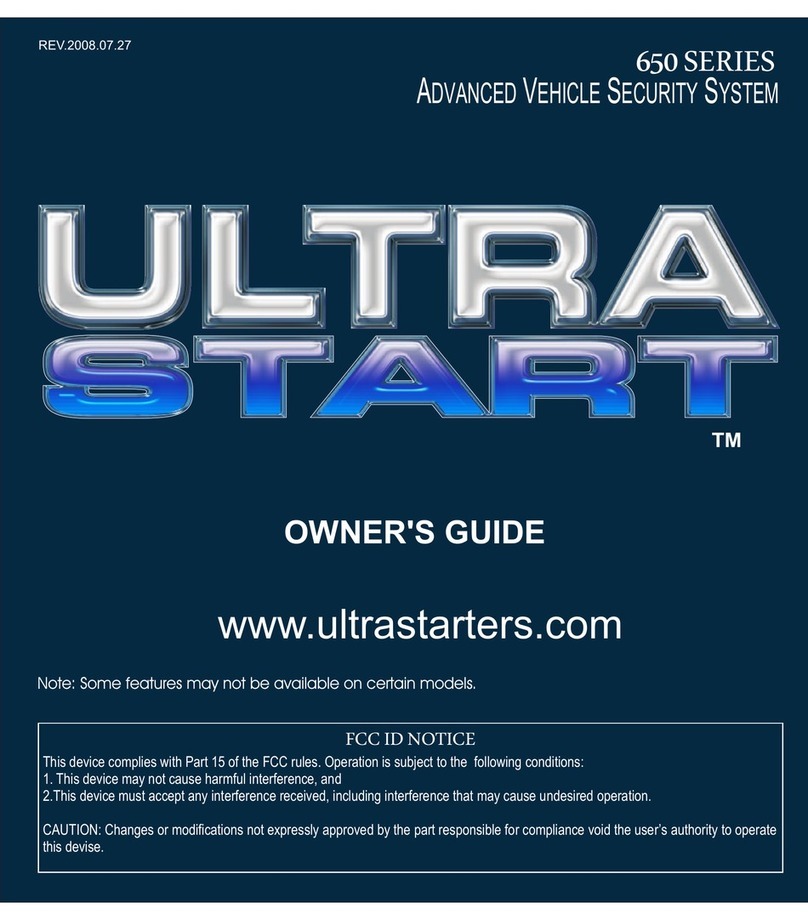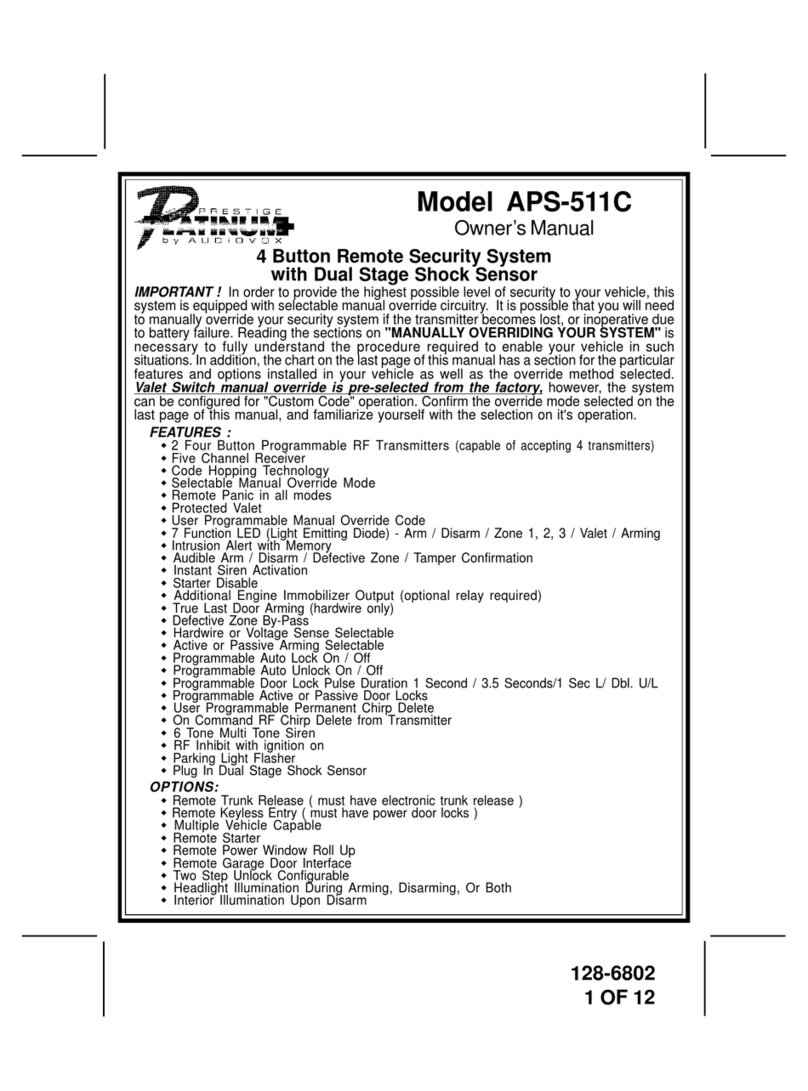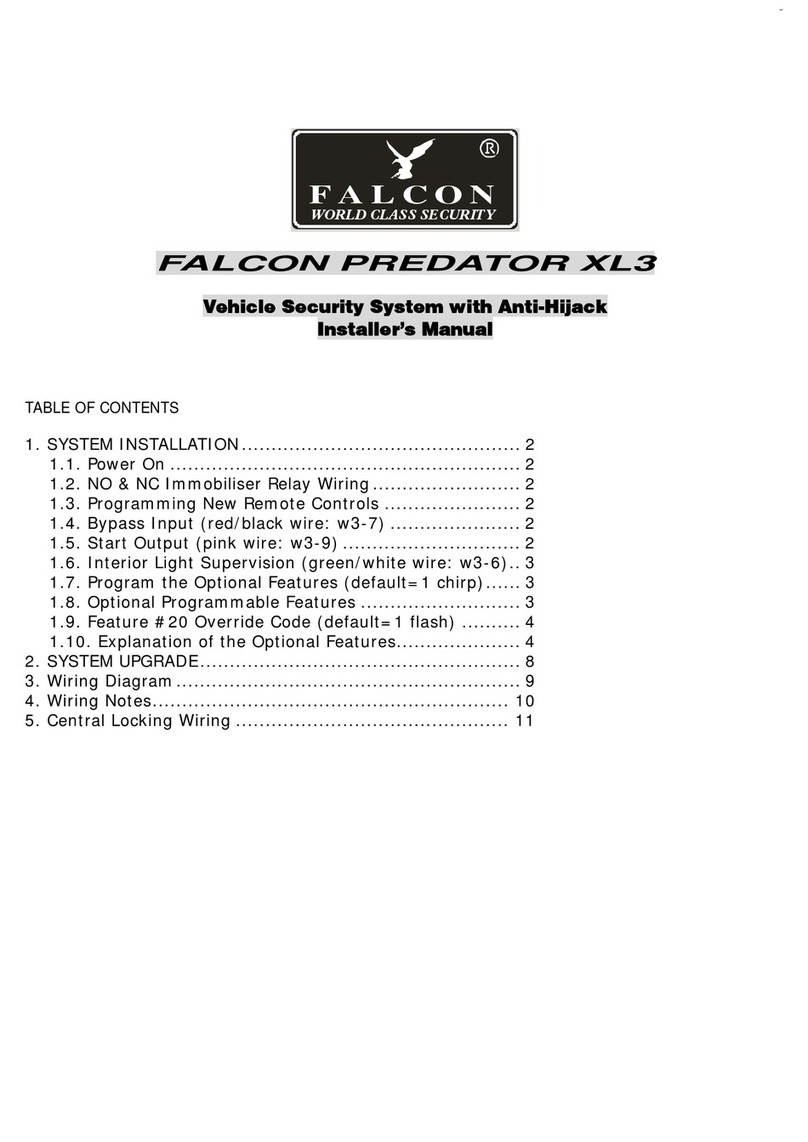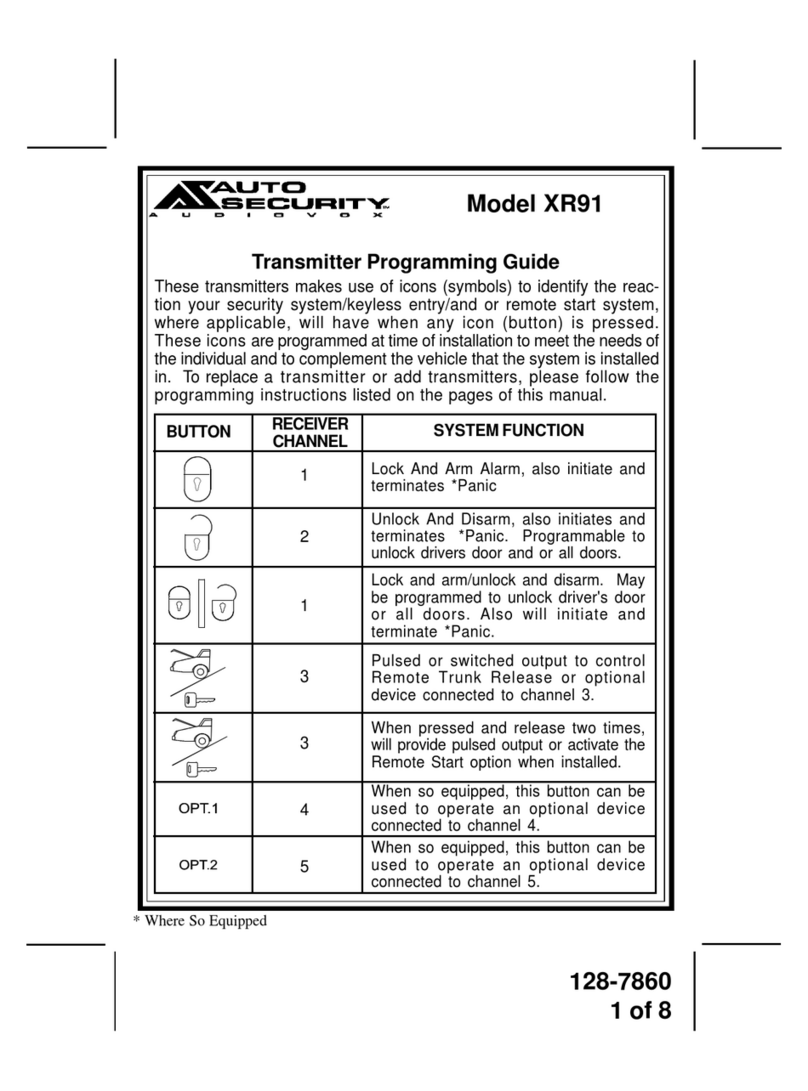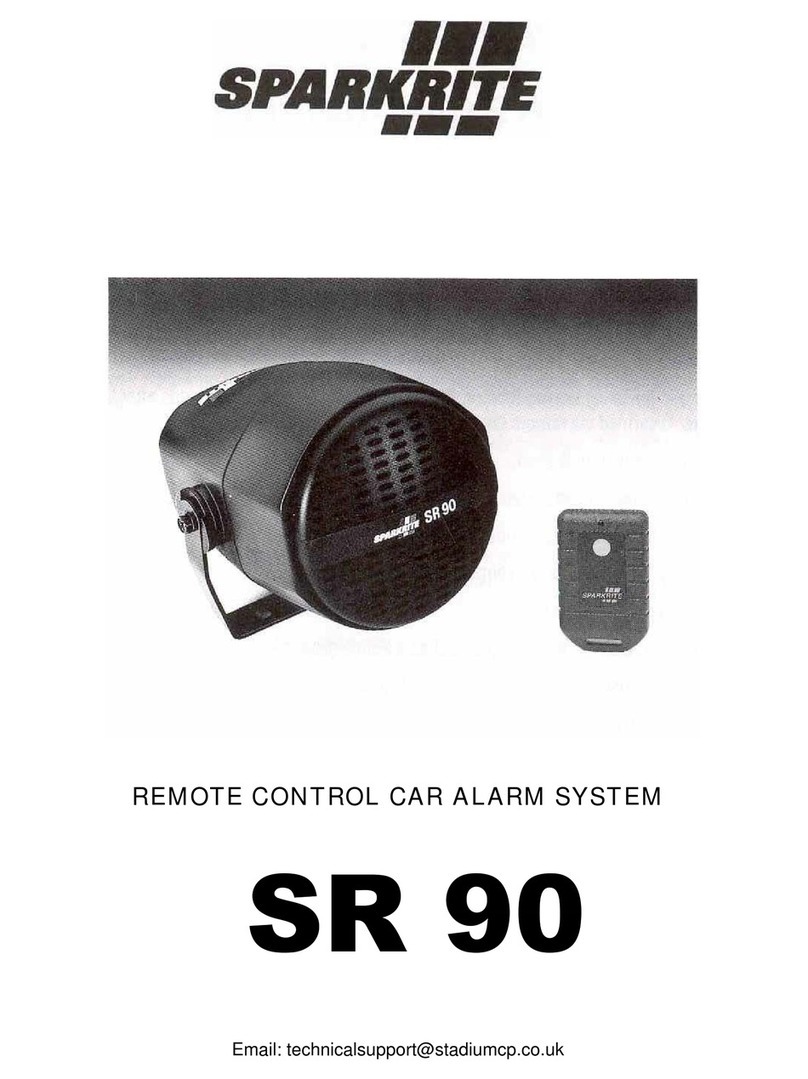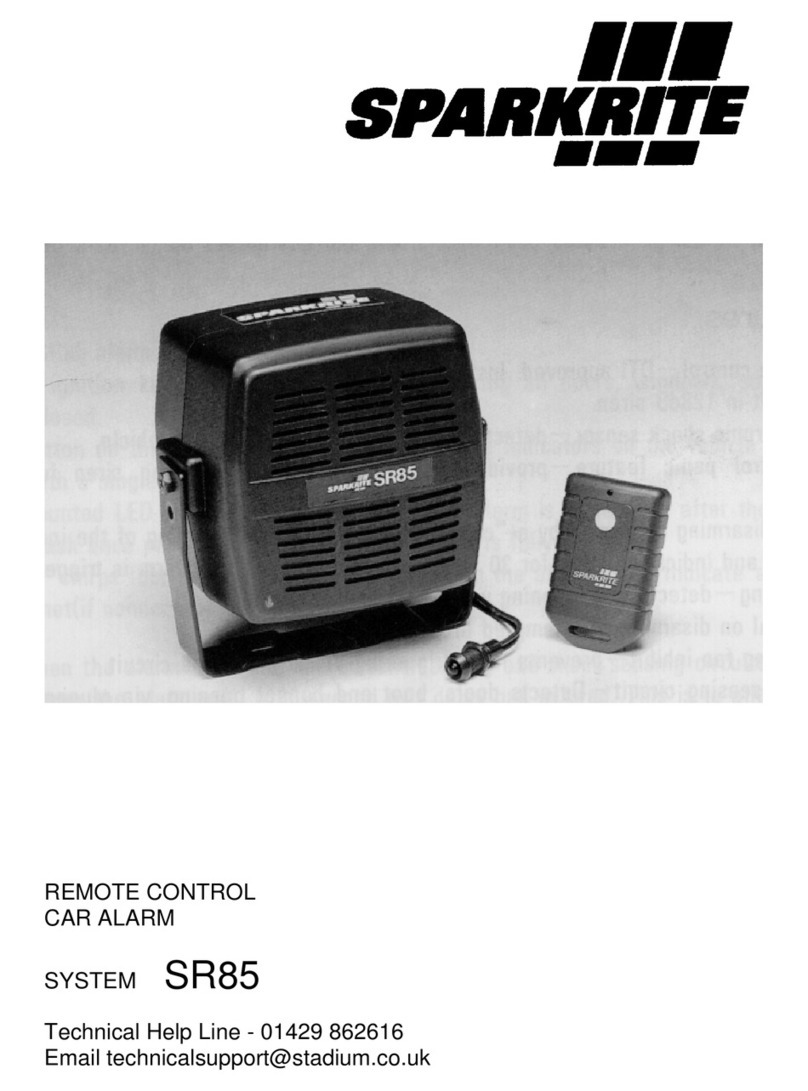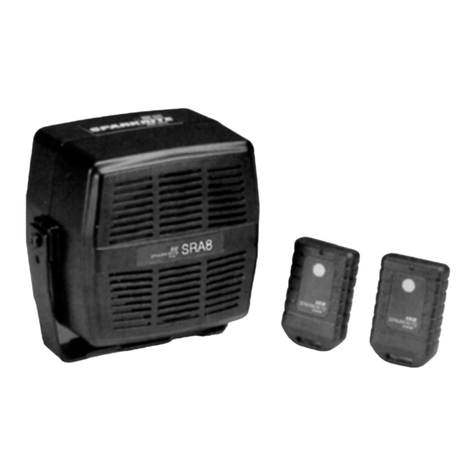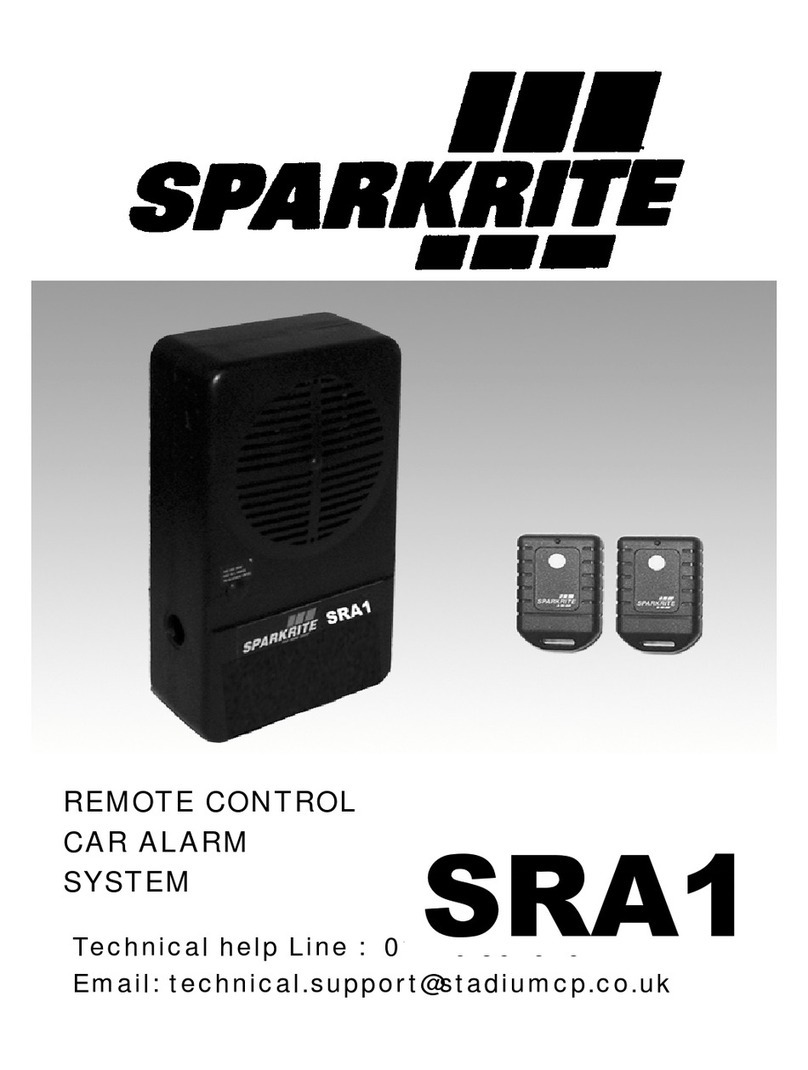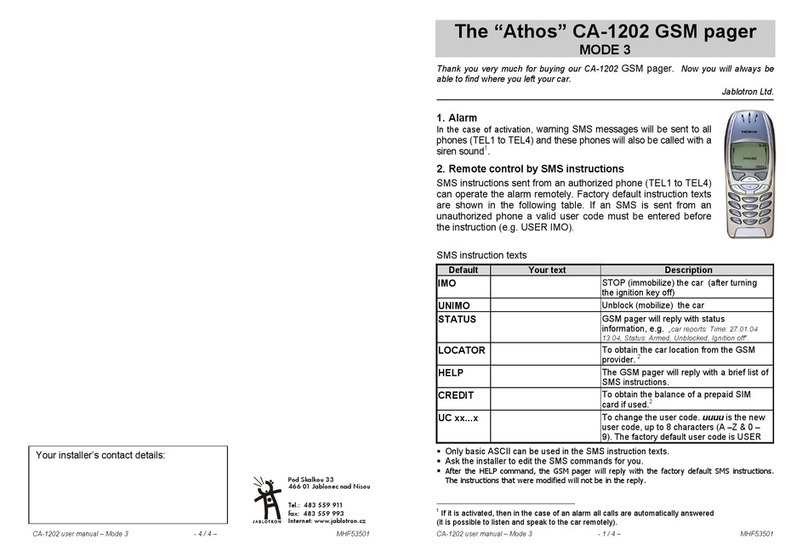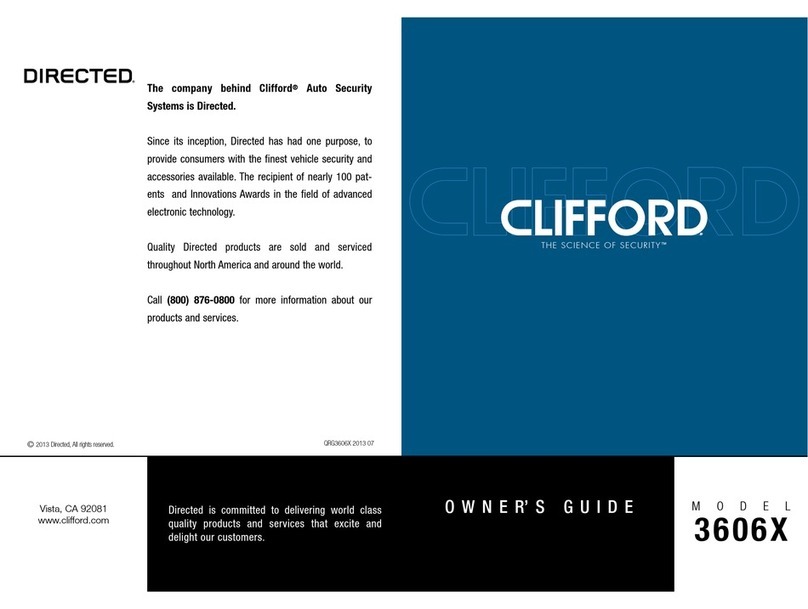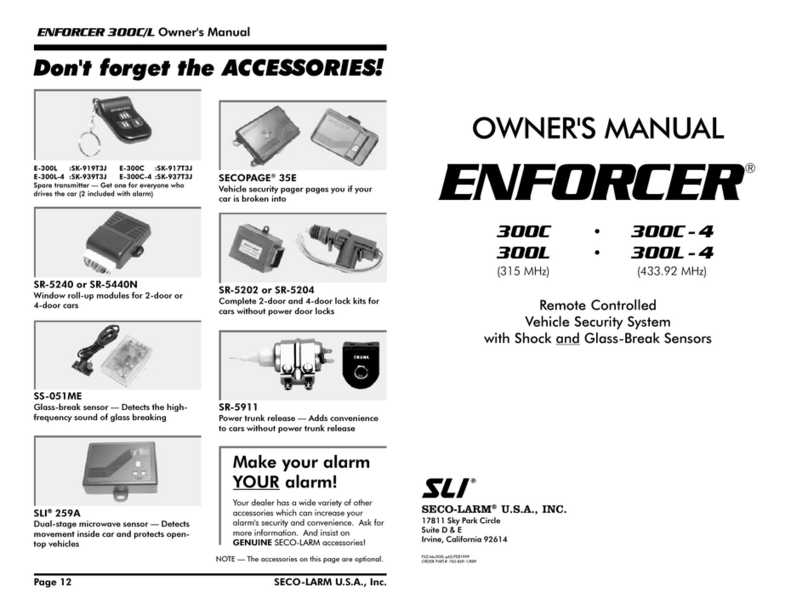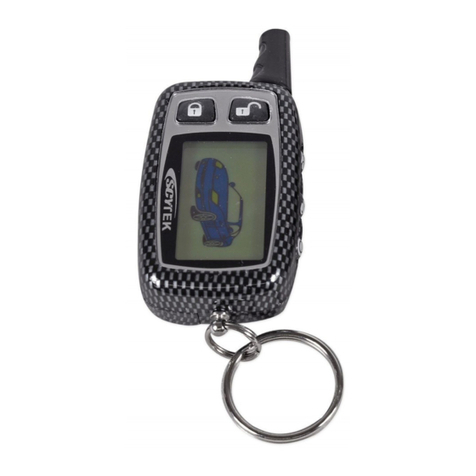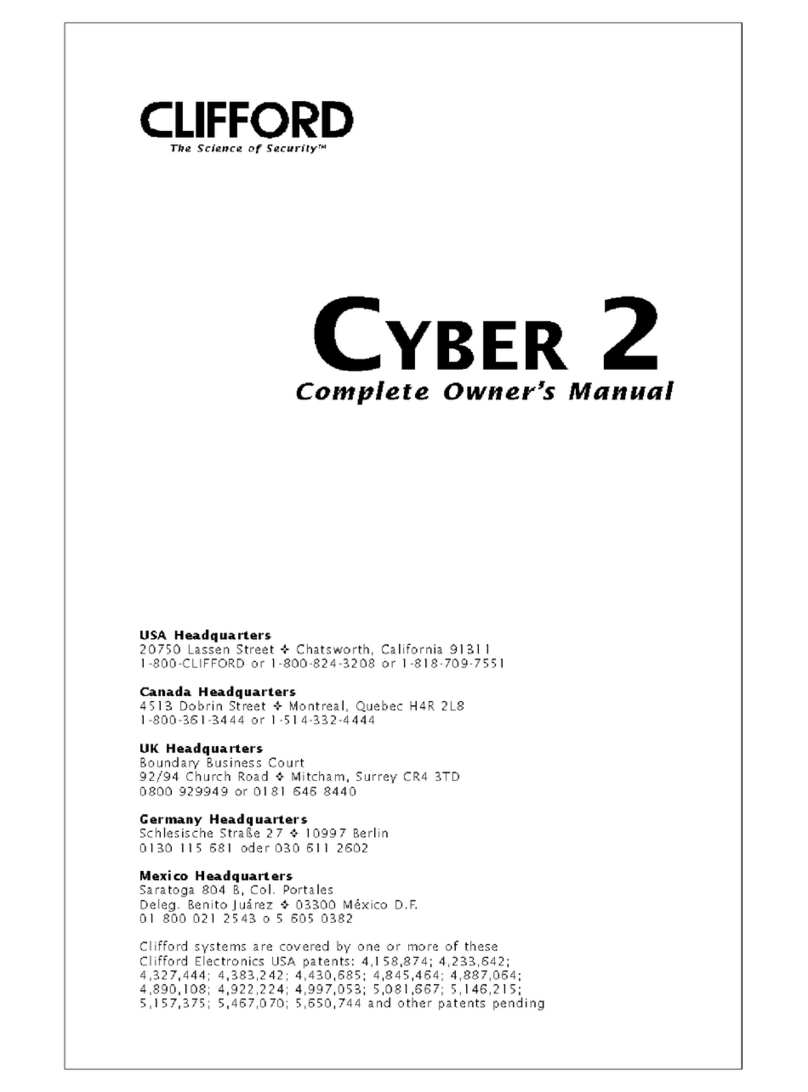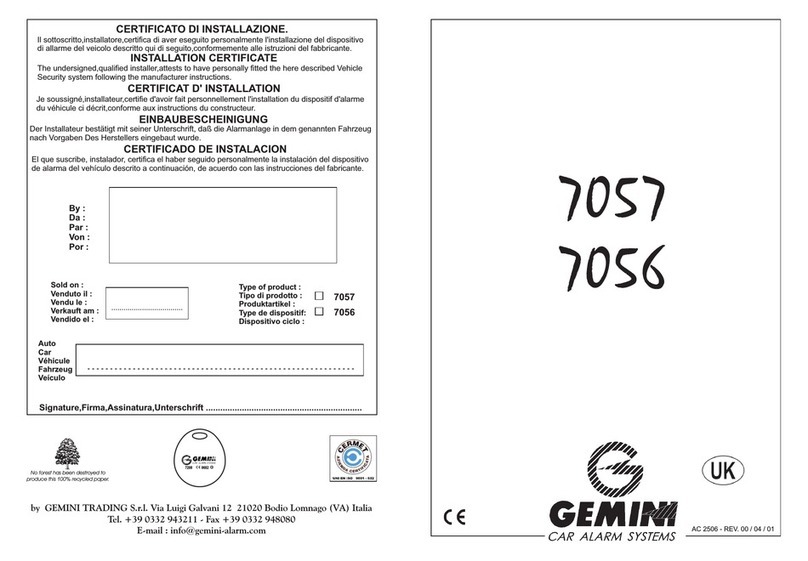
SR75H REMOTE CONTROL CAR ALARM SYSTEM
3
SPARKRITE SR75H
REMOTE CONTROL CAR ALARM SYSTEM
The Sparkrite SR75H compact remote control car alarm system incorporates the
latest “state of the art” microprocessor technology offering the ultimate in product
reliability and performance. The unique easy-fit design offers easy installation and
ensures many years of trouble free operation.
Table of Contents
OPERATING YOUR SR75H ALARM SYSTEM ............................................................... 4
ARMING YOUR ALARM AND DOOR OPEN ALERT ......................................................4
DISARMING YOUR ALARM .............................................................................................4
ENTRY ALERT AND REMOTE PANIC ............................................................................4
FITTING INSTRUCTIONS ................................................................................................5
VEHICLE WIRING TESTING ............................................................................................ 5
INSTALLATION NOTE ......................................................................................................5
MAKING RELIABLE CONNECTIONS (AND USING IDC CONNECTORS)..................5/6
MOUNTING THE MAIN ALARM MODULE AND HARNESS LOCATION.....................6/7
SR75H WIRING CONNECTIONS.....................................................................................7
ARMED INDICATOR LED AND GREEN WIRE-ALARM ANTENNA................................8
YELLOW WIRE-ELECTRIC FAN INHIBIT........................................................................9
BLACK WIRE-EARTH....................................................................................................... 9
RED WIRE-POWER SUPPLY CURRENT SENSING..................................................... 10
ORANGE/WHITE WIRE-CENTRAL LOCKING CONTROL............................................ 10
BOOT AND BONNET SWITCH.......................................................................................11
SHOCK SENSOR............................................................................................................11
TESTING THE ALARM INSTALLATION.........................................................................12
INSTALLING THE RUBBER BOOT................................................................................ 12
TROUBLE SHOOTING GUIDE..................................................................................13/14
SENSOR CONNECTION (OPTIONAL)...........................................................................14
ADDITIONAL REMOTE CONTROL TRANSMITTERS...................................................14
TECHNICAL HELP AND PRODUCT APPROVALS ....................................................... 15
ACCESSORIES FOR THE SR75H ALARM....................................................................15
